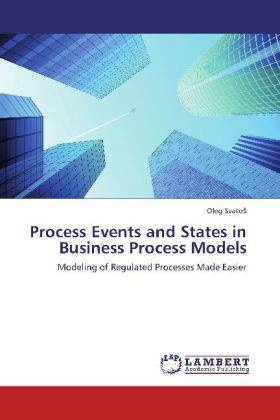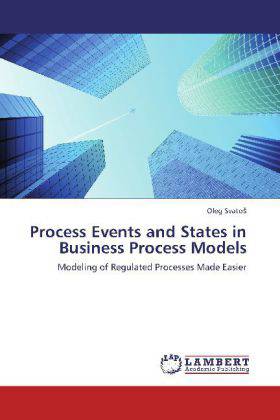
- Afhalen na 1 uur in een winkel met voorraad
- Gratis thuislevering in België vanaf € 30
- Ruim aanbod met 7 miljoen producten
- Afhalen na 1 uur in een winkel met voorraad
- Gratis thuislevering in België vanaf € 30
- Ruim aanbod met 7 miljoen producten
Zoeken
Process Events and States in Business Process Models
Modeling of Regulated Processes Made Easier
Oleg Svatos
Paperback | Engels
€ 75,45
+ 150 punten
Omschrijving
This book focuses on modeling of regulated business processes, which are very sensitive to correct capturing of process details characterized as process events and states. The book starts with an overview of available process modeling languages and their differences are discussed in detail. After this introduction we get deeper into the process modeling languages and analyze what these languages are trying to capture - the process events and states. The analysis shows that the discussed languages support only some of them. And so we pick three popular process modeling languages and put them through a test case, which is based on Czech regulation of a building process. This test case allows us to review their capabilities to capture the process events and states including the ways how they can get along with their only partial support. Upon the unsatisfying results of the popular process modeling languages in the test case, there is introduced Process State Diagram (PSD) which, as demonstrated, is capable of capturing the process events and states in the test case in much simpler and precise way than the three reviewed process modeling languages were able to.
Specificaties
Betrokkenen
- Auteur(s):
- Uitgeverij:
Inhoud
- Aantal bladzijden:
- 152
- Taal:
- Engels
Eigenschappen
- Productcode (EAN):
- 9783659282393
- Verschijningsdatum:
- 28/10/2012
- Uitvoering:
- Paperback
- Afmetingen:
- 150 mm x 220 mm
- Gewicht:
- 231 g

Alleen bij Standaard Boekhandel
+ 150 punten op je klantenkaart van Standaard Boekhandel
Beoordelingen
We publiceren alleen reviews die voldoen aan de voorwaarden voor reviews. Bekijk onze voorwaarden voor reviews.








